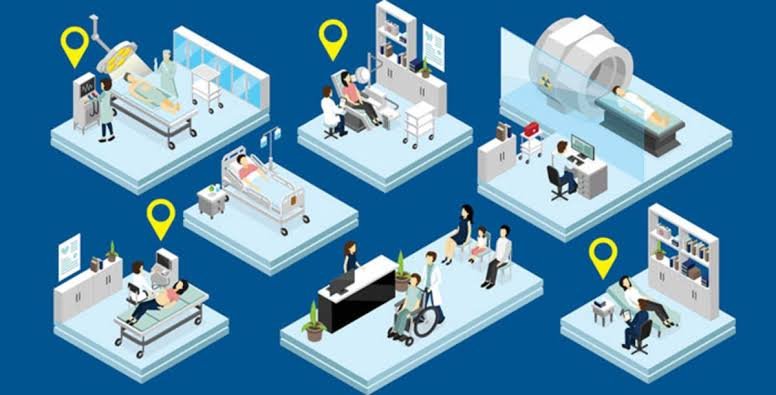Real-Time Location Systems, or RTLS, have widespread applications in various sectors like supply chain management, government and military operations, and retail. In the pharmaceutical and healthcare industry, RTLS is rapidly gaining popularity as a crucial tool to enhance patient safety, security, efficiency, and overall operations. Here are some specific benefits;
Improved asset management
One of the primary benefits of RTLS in pharmaceutical and healthcare is enhanced asset management. These industries rely heavily on delicate, expensive, and critical equipment and medications that should always be accounted for. RTLS technology can track and locate medical equipment, such as infusion pumps, defibrillators, monitoring devices, and prescription drugs, thereby reducing the risk of theft, misplacement, or loss. The system can provide information on asset usage and activity to optimize workflow and prevent unauthorized access to controlled substances. This way, the staff can locate and retrieve necessary items in real time, improving patient care and operational efficiency.
Enhanced workflow and productivity
Hospitals and pharmaceutical industries are fast-paced environments where timing and accuracy are crucial. RTLS for hospitals contributes to streamlined workflow, reduced waiting times, and increased productivity. For instance, it can track the location and movement of staff, patients, and medical supplies, allowing for efficient staff allocation and bed management. Patients can be located in real-time, reducing wait times and enhancing patient satisfaction.
Environmental and energy efficiency
RTLS improves environmental and energy efficiency. For example, the system can enhance energy efficiency by managing the HVAC system according to the positions of employees, patients and visitors. Additionally, this technology can oversee areas requiring temperature control, like pharmacy storages, laboratories and blood banks. This helps minimize the chances of spoilage and contributes to the environment.
Infection control and monitoring
RTLS systems can be part of an infection control program, especially during hand hygiene. During this process, RTLS systems identify when hands have been washed using soap or other cleaning agents and then track them through the facility. This practice ensures that hands are properly cleansed before coming into contact with any surfaces that may have bacteria or viruses. Additionally, it aids in keeping track of completed tasks to avoid any oversight of responsibilities by staff members.
Patient safety and workflow optimization
In healthcare, RTLS is utilized to monitor and record information such as temperature, blood pressure, heart rate, respiratory rate and other vital signs during their stay at the hospital. This system enables doctors to continuously track these signs throughout the patient’s hospital stay, allowing them to assess their overall health condition and make informed decisions regarding their treatment plan. Additionally, RTLS assists healthcare professionals in managing and organizing records and documents of patients who have been admitted to hospitals or clinics.
Temperature and environmental monitoring
Thermal imaging cameras serve a role in healthcare settings and other industries that require temperature monitoring. These cameras enable technicians to analyze rooms or equipment from perspectives providing them with precise insights into the temperature conditions within a specific area. Such valuable information empowers technicians to make adjustments to ensure conditions for patients and staff members are maintained.
Improved data accuracy
Incorporating RTLS into your facility can help improve the accuracy of patient data collected over time. It becomes crucially significant when collecting data regarding patients who may have visits or appointments scheduled throughout the day. Employing RFID tags for monitoring will allow you to observe the frequency of someone’s visits to your facility, the duration of their stay and departure times. Additionally, it enables you to identify any patterns that might indicate any issues encountered by them during their visit. Utilizing this information can enhance your services and provide care for patients.
Enhanced patient experience
Patients can easily access health information from any device, regardless of their location. This empowers them to stay well-informed and minimize waiting times by connecting with healthcare professionals through video conferences or other online platforms. With the ability to remain engaged constantly, real-time location systems (RTLS) enable healthcare providers to prioritize delivering care than getting caught up in administrative duties.
Comply with regulations regarding electronic health records (EHRs)
In most situations, hospitals are required to possess a health record (EHR) system to receive payment from insurance companies or government healthcare programs like Medicare and Medicaid. This allows them to bill patients for the services they receive. However, if there are any issues with the EHR system, such as a breach by hackers or a system crash caused by a virus infection, hospitals may face difficulties in receiving payment for the services provided during that period if they lack a means of storing their data.
Conclusion
RTLS benefits in pharmaceutical and healthcare settings are numerous. Improved management of assets, workflow, enhanced safety and security for patients, and a focus on environmental sustainability are just a few of the many advantages. Real-Time Location Systems (RTLS) technology allows hospital administrators, healthcare providers and pharmaceutical companies to gain insights, make informed decisions, and ultimately enhance patient care and satisfaction. Recognizing the benefits of real-time location systems in pharmaceutical and healthcare settings is crucial. Embracing innovation in this area presents an opportunity to improve outcomes.
